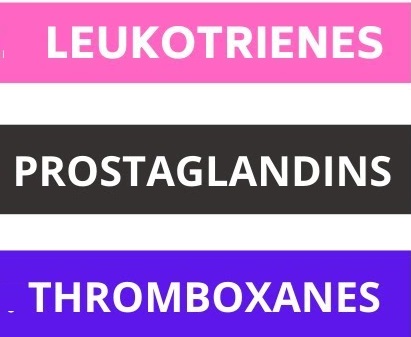
EFA Functions
(2) EFAs increase cellular energy production

EFAs increase metabolism, energy levels and stamina, and speed muscle-fatigue recovery
In the 1950’s, Dr. Johanna Budwig, a top German biochemist, was the first to realize the significant role of natural, unaltered EFAs in creating energy at the cellular level. After decades of research, she determined that, in contrast to healthy people, cancer patients invariably have low blood levels of hemoglobin^, phospholipids, lipoproteins and EFAs. She focused on how undamaged EFAs contain chemically active electron clouds (pi-electrons) at their closely spaced double-carbon bonds, which resonate with the sun’s photon electrons – linking man’s vital energy to the sun. By attracting oxygen, energetic electrons increase cellular energy production by enhancing oxidation enzymes the cellular respiration cycle for metabolising glucose from food.
Random, uncontrolled oxidation in the body is prevented by the body’s antioxidant enzyme systems and by dietary antioxidants.
^ Hemoglobin (Hgb) is the iron-containing, oxygen-transport metallo-protein in red blood cells;
EFAs turned out to be the “Missing piece“ in cellular respiration
Cellular energy production enzymes (oxidation enzymes involved in electron transport chain in cellular respiration) need EFAs. In 1960, the renowned double Nobel prize winner Dr. Linus Pauling described the function of the hydrogen bridge in cellular respiration, but was unable to identify the electron donor for its function. Dr. Budwig was the first to recognize that EFAs were the sought-after substance responsible for electron displacement, and also recognized that not only protons, but also electrons flow over the hydrogen bridge.
In a speech in 1959, Dr. Budwig said, referring to the essential fats,
“Without these fatty acids, the respiratory enzymes cannot function and the person suffocates, even when he is given oxygen-rich air.”
DHA is especially concentrated in membranes of the highly active brain/nerve cells, retina, inner ear, adrenal glands and sex glands. With its 6 double-carbon bonds, DHA has 6 sites with electron “clouds“ that can attract oxygen to the membrane, thereby increasing oxidation and energy production in the cellular respiration cycle.
Restoring cellular respiration could possibly reverse the cancer cell back to normal. Cancer cells are in “survival mode” to create at least a small amount of energy using inefficient fermentation, a process which needs lots of glucose and does not use oxygen. Dr. Budwig reversed cancer in even end-stage patients using EFAs in flaxseed combined with cottage cheese (which makes fats more soluble).
BTW: The ability of linseed oil (flax oil) to attract oxygen, causing it to harden in air, made this oil useful as a varnish before polyurethane etc..
“Here Comes the Sun !“- EFAs Absorb Sunlight
” ¶And God said, Let there be light: and there was light.”
– Genesis 1:3
God designed man to be “in tune” with the rest of His creation
Resonance Law.
Physicist, Niels Bohr, determined the basic physical law, that matter can not change its condition without either ABSORPTION or RADIATION of electromagnetic waves of a frequency corresponding to its own radiation frequency.
The food we eat should contain electrons, with a vibrating frequency which attracts the energetic electrons carried by solar photons. An undamaged, highly unsaturated, fatty acid source, such as in fresh-ground flax seeds or cold-pressed flax seed oil, contain many undamaged electrons originated from the sun. These sun-source electrons are incorporated into phospholipid fatty acids comprising the cell membranes, where they have a natural resonance with the sun’s energy (think of an antenna “tuned into” the sun). These electrons not only act as receivers, but also as amplifiers, transmitters and storage for the sun’s photon energy, governing many of the body’s vital functions.
Sunlight absorption increases the ability of EFA electrons to react with oxygen about 1000-fold!
Sunbathing thus enables EFAs in cell membranes to resonate with and harness the sun’s energy
Note on Skin cancer.
Sufficient undamaged, polyunsaturated fat in the diet beneficially absorb the suns energy, consequently using up its burning /skin-damaging power.
Fatty Acids combined with sulfur-containing protein become water-soluble.
Dr. Budwig stressed that fatty acids become water-soluble, free-flowing and more easily absorbed, when combined with sulfur-containing amino acids: methionine, cystine or cysteine* (best sources in U.S. are cottage cheese, yogurt and whey protein). The double bond sites of EFAs readily incorporate this protein to become lipoprotein.
(EFAs are weakly basic and form weak, oscillating hydrogen bonds with weak acid groups such as sulfhydryl groups in proteins. The system of unsaturated fats in association with protein is in fact a dipolar system in its nature, where a continual exchange or movement of electrons is able to take place).
Becoming water-soluble, allows the fatty acids to by-pass processing by the liver (often impaired in ill health) to break them down, and are thus available for the body’s immediate use.
Dr. Budwig and her colleagues reported a very effective therapy for many serious ailments (including cancer).
Budwig used a blended combination of electron-rich, fresh flax seed oil and low-fat cottage cheese as part of a prescribed diet. Today, yogurt and whey protein are used as alternatives to cottage cheese.
* Methionine, cystine, and cysteine and their derivatives owe their designation of “sulphurated amino acids” to the fact that they contain sulfur in addition to carbon, hydrogen, nitrogen and oxygen.


















